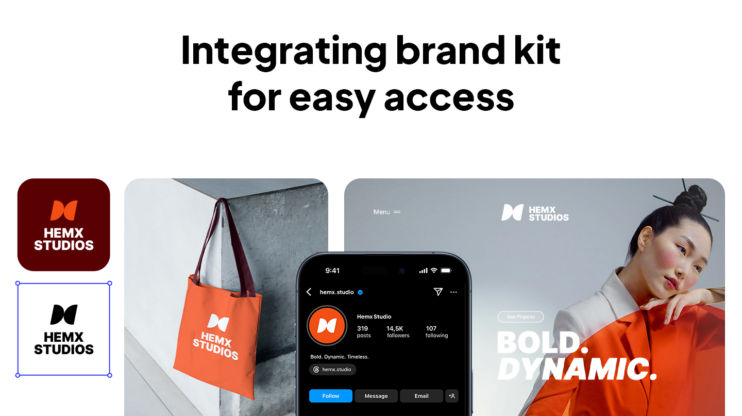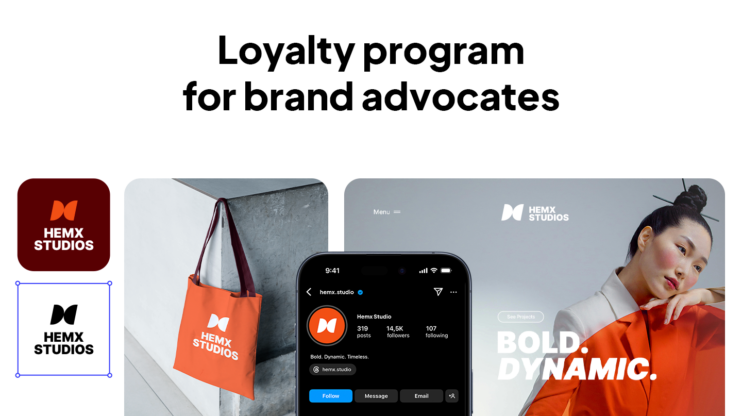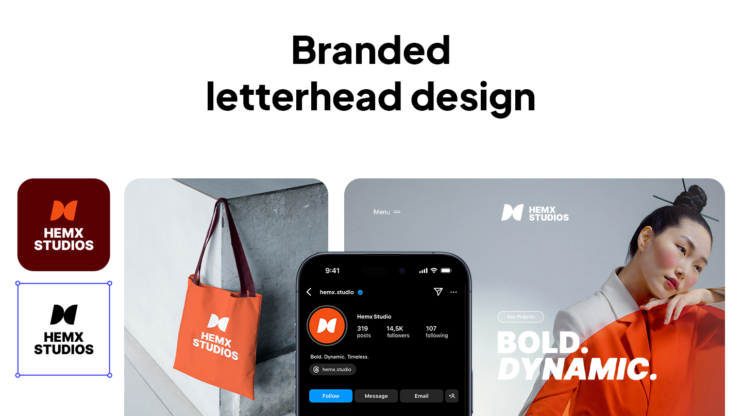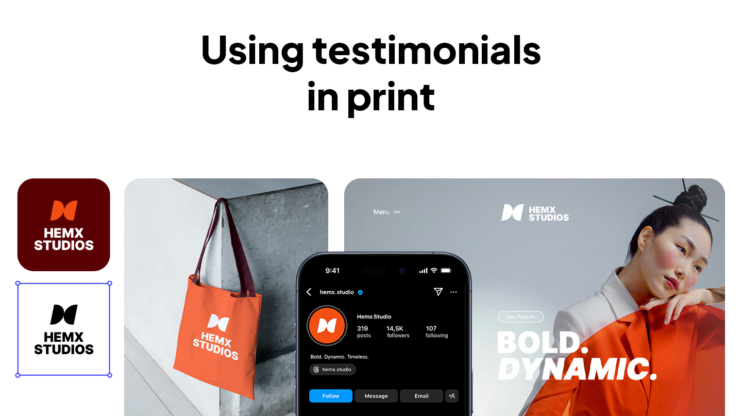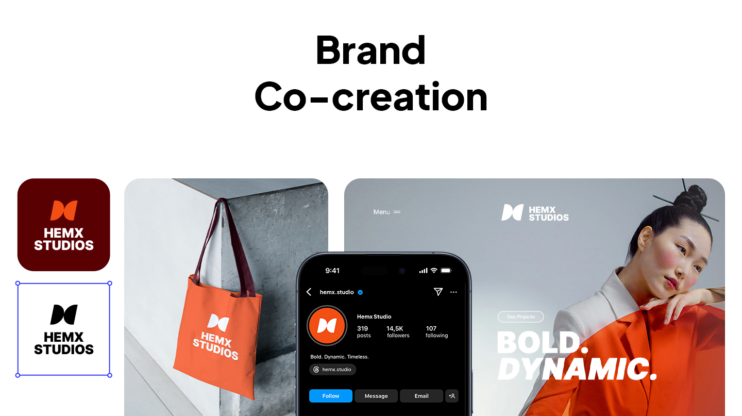The best way to decide which brand channels to focus on first is to understand where your audience spends time and engages. You might have already been overwhelmed with so many social platform options: Instagram, TikTok, email, LinkedIn, newsletters, podcasts, and the list grows every day. Trying to be everywhere at once usually leads to deviating from your goals and seeing little return.
That’s why a smarter approach is to prioritize. Let’s discover exactly how to make that decision step by step.
How to choose the right brand channels step-by-step?
Follow these steps to choose the right brand channels and develop a strategy that scales with your growth.
Define clear objectives
Before you jump into posting everywhere, pause and ask yourself what you actually want to achieve. Different channels do different jobs:
- Social is great for getting noticed and building a community
- Email is good at turning interest into sales
- In-person events help build trust and long-term relationships
Your goals will guide you to the right channels.
For instance, if you’re a small ecommerce brand focused on boosting sales, email is the natural first choice while social media can support by growing your list.
Understand who your target audience is
The most important part of defining your brand channels is your target audience. The next step is to understand who you’re trying to reach. The target audience is your ideal customer profile. Defining it means having everything figured out about them: knowing who they are, who they like/hate, where they live, and hang out.
The basics you should look for are:
- Demographics (age, location, income)
- Psychographics (values, interests, lifestyle)
- Behaviors (buying habits, online activity, decision-making patterns)
In reality, the better you know them, the easier it is to spot which channels they use. If your ideal customer is a young professional starting an online store, chances are they hang out on Instagram and TikTok for inspiration. Thus, these are the channels you should focus on.
How to define your target audience?
A common mistake businesses make is saying “my audience is everyone”. The clearer you are, the easier it becomes to pick the right channels and create messages that connect. In my experience doing user research for a small business, I’ve seen how powerful it is to define your audience early.
For example, we identified not just our likely customers but also our MVPs. That insight helped us meet them where they already were and write messaging that actually resonated. Here are the steps we took.
- Identify the pain points your product solves: Who feels these pains most strongly? A bookkeeping app, for instance, might be useful for freelancers, but even more critical for small business owners juggling staff and multiple accounts.
- Listen to the questions people ask: Go where your potential customers talk about their problems. Forums, Q&A sites, and social platforms are the best places for understanding what people struggle with.
- Resources to try:
- Reddit (search relevant subreddits)
- Quora for specific problem-focused questions
- AnswerThePublic or AlsoAsked for keyword-related queries
- Collect insights from your existing users: If you already have customers, use them as your compass. Surveys, interviews, and usage data will tell you both who they are and why they chose you.
- What to ask in surveys: demographics (age, job, location), psychographics (values, goals), behaviors (where they spend time online, what content they consume).
- Tools to use: Typeform, Google Forms, SurveyMonkey, or even quick polls via Instagram Stories or LinkedIn.
- Map out demographics, psychographics, and behaviors: Go beyond age and income. Ask: what do they value most? How do they make decisions? What frustrates them? What platforms do they trust? You can use HubSpot’s Make My Persona Tool to help you build a simple, structured profile.
- Validate with analytics and data: Data confirms what you hear. Check where people are already engaging with you online and which channels bring the best traffic or conversions. Resources you can use include:
- Google Analytics for audience reports & traffic sources
- Meta/LinkedIn Insights for demographics of followers
- Hotjar for on-site behavior analysis
- Create a clear description of the persona: Pull it all together into a simple profile you can reference. For example: “Sara, 32, owns a handmade jewelry shop, wants to grow online sales but has limited time. She scrolls Instagram daily for inspiration and checks email every morning.”
This way, when you’re deciding between channels like Instagram, email, or events, you’re not guessing but going where “Sara” actually spends her time.
Audit current channels & competitors
While finding new things sounds exciting, you should first look at what you have now in front of you. It starts with analyzing the competitors and tracking the current channels you’re using. For instance, if you are using Instagram/Facebook as social channels, measure their effectiveness. Do you gather leads and make sales on these platforms? If yes, continue there. If you see none of these, then find your business a new channel.
Here are the basic signals you should look at for each channel:
- Email: open and click rates, list growth
- Social: engagement, follower growth, referral traffic
- Events: sign-ups, attendance, conversions
Then look at competitors. Which channels are they active on, and where do they get the most traction? Tools like BuzzSumo, SimilarWeb, or SEMrush can reveal traffic sources and top-performing content. It’s not aiming to copy them, but to spot patterns.
Prioritize & test channels
As we discussed, not all channels are for every business need. To find the perfect one, you should test and prioritize the ones that meet your business needs and align with the persona’s pain points.
Once you’ve reviewed your options, select 2-3 channels that best match your goals and audience. Starting small keeps you focused and avoids spreading resources too thin.
Test as you go. Use A/B testing on subject lines, ad creatives, or event formats to see what actually drives results. Track performance over time, and be ready to double down on what works.
It’s also smart to mix proven channels, like email, with one newer or emerging option. That way, you get reliable results while still leaving room to discover fresh opportunities.
Create a channel strategy
No matter which channels you choose, they should feel like parts of the same brand story. You can also target different personas in different channels. However, you should keep your messaging consistent so that your audience recognizes the brand if they see it anywhere.
To keep your channels working together, follow this simple roadmap:
- Define your brand voice: document tone, style, and key messages.
- Set content pillars: choose 3-5 themes to guide all communication.
- Match personas to channels: focus each channel on the audience most active there.
- Adapt, don’t copy: share the same story in formats suited to each channel.
- Stay consistent: use tools to schedule, track, and review regularly.
Choose your best brand channels
With so many platforms out there, finding the ones that truly match your brand and audience takes some effort and strategy. To discover the channels that bring the best results, you need to analyze what’s working, research where your audience spends time, and test the waters before going all in.
Focus on just a few channels that fit your goals: social for awareness, email for sales, or events for trust, and keep your message consistent across all of them. This way, people recognize your brand no matter where they meet it.
By keeping things focused and practical, you’ll avoid wasting energy, see better returns, and build a channel strategy that grows with your business.
FAQ
What influences channel selection?
How do customer preferences shape choice?
Which channels fit different industries?
How does budget affect decisions?
What role do demographics play?
How do you measure effectiveness?
What are the risks of one channel?
How do competitors impact strategy?







